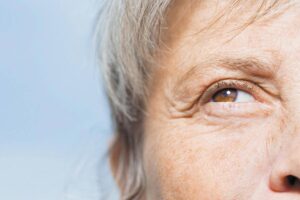 Diabetic retinopathy is one of the most common complications of diabetes, particularly in the elderly. It occurs when high blood sugar levels damage the blood vessels in the retina, leading to vision problems and, in severe cases, blindness. Understanding the risk factors associated with diabetic retinopathy can help seniors and caregivers take proactive steps to protect eye health.
Diabetic retinopathy is one of the most common complications of diabetes, particularly in the elderly. It occurs when high blood sugar levels damage the blood vessels in the retina, leading to vision problems and, in severe cases, blindness. Understanding the risk factors associated with diabetic retinopathy can help seniors and caregivers take proactive steps to protect eye health.
What Increases the Risk of Diabetic Retinopathy in Seniors?
Long-Term Diabetes: The longer someone has diabetes, the higher the risk of developing diabetic retinopathy. For seniors with a history of poorly managed diabetes, the risk is even greater.
Poor Blood Sugar Control: Consistently high blood sugar levels can damage blood vessels in the retina, accelerating the progression of diabetic retinopathy.
High Blood Pressure (Hypertension): Hypertension worsens the damage to blood vessels in the eye, increasing the severity of diabetic retinopathy.
High Cholesterol Levels: Elevated cholesterol can contribute to fatty deposits in the retinal blood vessels, further impairing vision.
Kidney Disease: Seniors with diabetic nephropathy are more likely to develop retinopathy, as both conditions stem from damage to small blood vessels.
Smoking: Smoking increases oxidative stress and inflammation, worsening the risk of diabetic complications, including retinopathy.
Age and Ethnicity: Elderly individuals, especially those from African American, Hispanic, or Native American backgrounds, are at a higher risk of developing diabetic retinopathy.
Prevention and Management
- Routine Eye Exams: Regular dilated eye exams can detect diabetic retinopathy early and prevent vision loss.
- Blood Sugar Control: Maintaining stable blood sugar levels through diet, exercise, and medications can slow disease progression.
- Control Blood Pressure and Cholesterol: Lifestyle changes and medications can reduce these risk factors.
By managing these risk factors, seniors can significantly lower their chances of developing diabetic retinopathy and preserve their vision.
